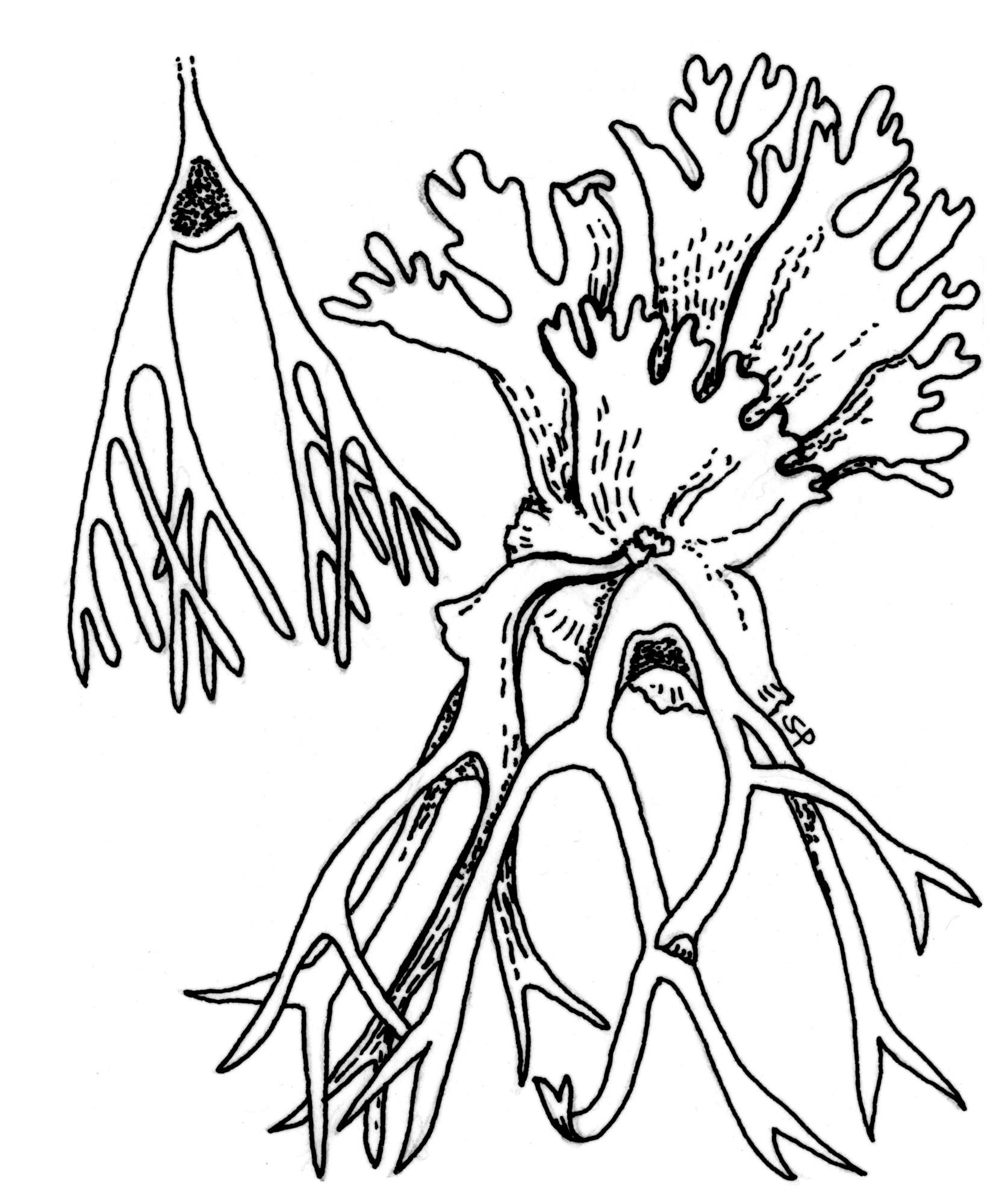
Greek platys-broad, kera-horn; referring to the horn-like appearance of the fronds.
Bracket epiphytes occasionally growing on rocks, popular in horticulture as the familiar staghorn and elkhorn ferns grown on wooden or tree-fern brackets on the side of trees and houses. Rhizome short-creeping, generally branching, covered with broad, papery scales. Sterile and fertile fronds different. Fronds downy when young. Sterile 'nest' fronds persistent, overlapping, becoming brown; margin entire or bluntly lobed. Fertile fronds mostly narrow, erect or hanging, with short, jointed stalks, forking equally into 2 at each division, leathery; margin entire; main veins dividing into 2 from the base of the frond, secondary veins netted. Sori in patches on the lower surface of the fertile fronds. Indusium absent.
17 species of tropical and subtropical rainforests, mostly growing on rocks and other plants (4 species in Australia).
Division by separation of new plantlets developing from adventitious basal buds or spores.
Horn-like upper fronds forking into 2 at each division.
Joe (1964b), Hennipman & Roos (1982).
Source: (1995). Polypodiaceae. In: . Horticultural Flora of South-eastern Australia. Volume 1, Ferns, conifers & their allies. The identification of garden and cultivated plants. University of New South Wales Press.
